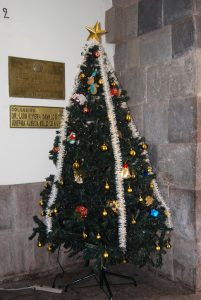Singing Before the Christ Child, Cuzco’s Villancicos
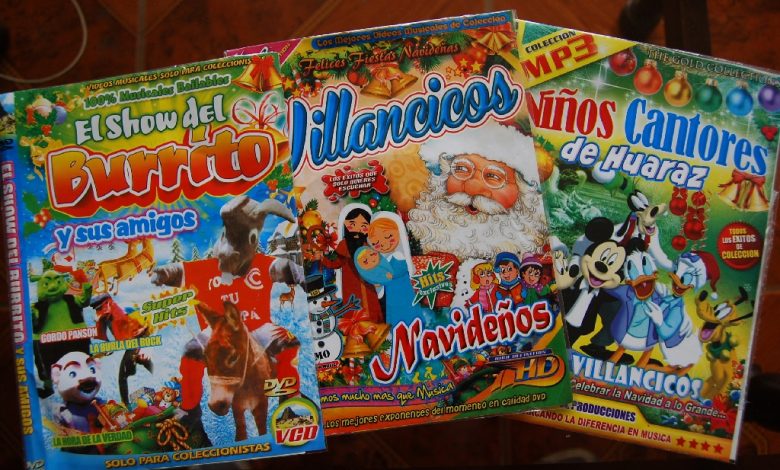
One wonders who has not heard a Christmas carol. There are international Christmas songs sounding in Cuzco like you hear anywhere else. But we also have our own holiday music. We call these carols “villancicos”. In Cuzco we have a strong tradition of Christmas with our manger scenes and our Christmas songs, many in Quechua. When you hear them they transport you to special times.
It is like my father says. Christmas is for children. But I did not understand him because I was still a child.
My brothers and I would get together lots of metal bottle caps. We would have a contest among ourselves to see who could get the most. Then we would flatten them, make a hole in their middle and run a wire through them. It was worth it because all together the flattened caps would serve as a rattle (sonaja). With them we could sing our villancicos before the nativity scene in our house on Christmas.
Villancicos are songs specifically for Christmas. They rhyme words to make verses about the history of Jesus, like the trip that Joseph and Mary made to Bethlehem, the Three Kings, and more.
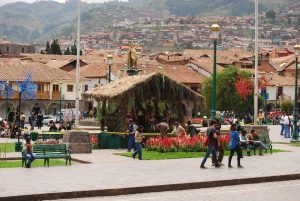
Originally the villancicos came from Spain where they were songs from the ordinary people for different festivities. They were not the Church hymns and songs for mass, but things people strung together like chapas—flattened bottle caps, following their own ideas and in popular forms of poetry with rhymes, verses, and a chorus. Their name comes from villa, which means a place of residence or a hamlet.

The Spanish brought these to Cuzco . We already had our own musical traditions with songs and dances for different festivals and feasts, as well as for ordinary times. This ordinary Spanish style, with words in Quechua or Spanish, became ours and on Christmas eve we would s them to the Christ child to make him happy and welcome in our house.
The Spanish also brought this tradition of the Christ child, though we had our own tradition of a baby boy, the baby son, who drew our devotion. It may be that when we sing to the Christ child, who we call the Niño Manuel, we are like our ancestors singing to the baby sun.
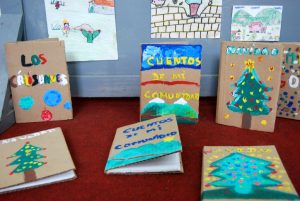
In Cuzco the choirs of some churches now prepare performances of villancicos in Quechua, the language of our ancestors, to sing during Christmas. Some of the choirs are the Coro of San Blas, the Coro Polifónico del Cusco, and many others. They perform on the 24th of December in memory of the birth of the baby Jesus. If you are in Cuzco you might like to hear them sing.
Each Choir gets organized and reherses to be able to sing the villancicos. Some choirs have the custom of wearing traditional, typical, dress such as ponchos and chullos, or just some distinctive items like special scarves. They will also rely on popular instruments to make the music to accompany them, such as guitars, charangos, quenas, tamborines, and more.
The kids of Cuzco usually love to hear the villancicos on Christmas. When we go to mass on the days close to Christmas we can hear the villancicosthat each church prepares for December.
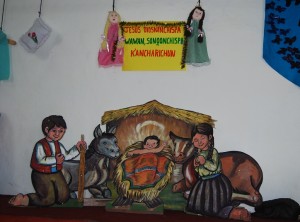
Besides these, the lights that are sold to decorate our Christmas trees also have melodies of the villancicos as do some Christmas cards with their memory chips.
It is fun to go into the street and wherever we go we find happy children walking up and down the sidewalks with toys and at the same time singing villancicos. Now I know why my father always told me Christmas is for children.
Here, here, and here are some villancicos for you to listen to.
